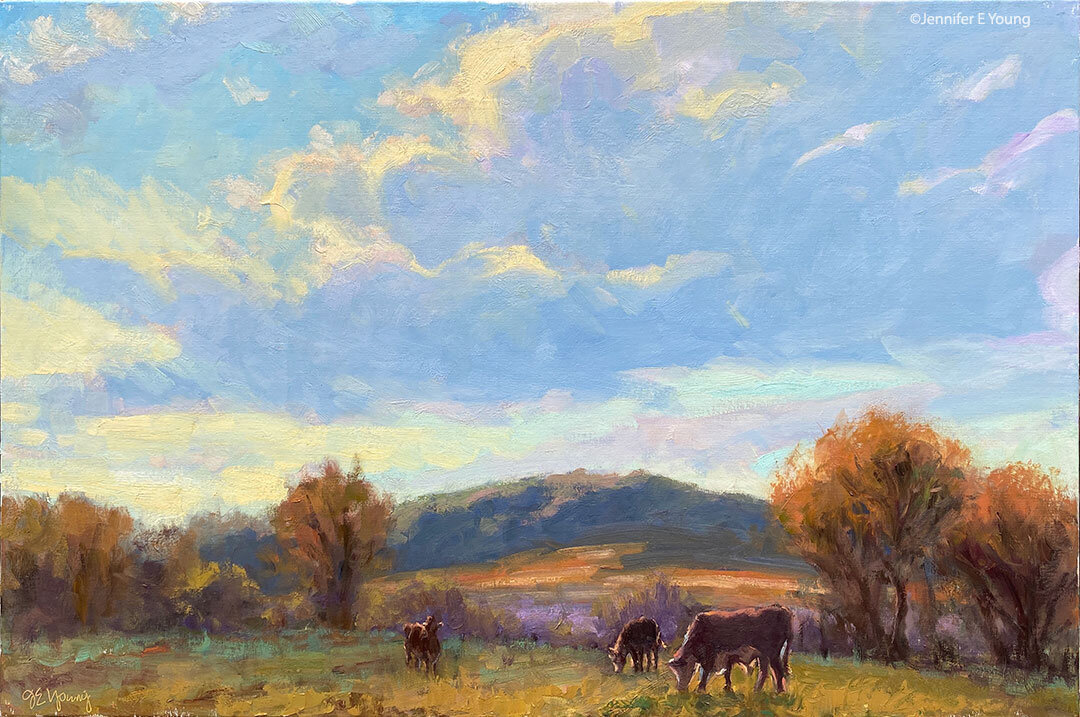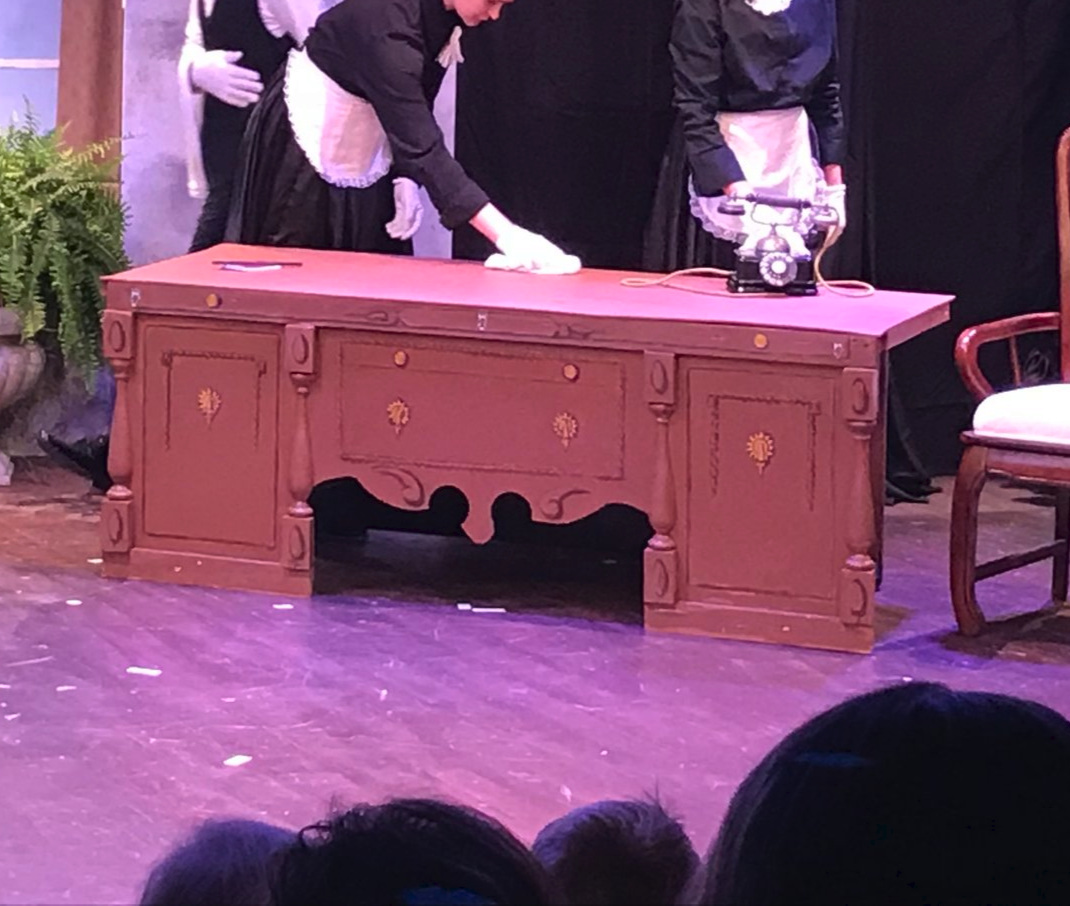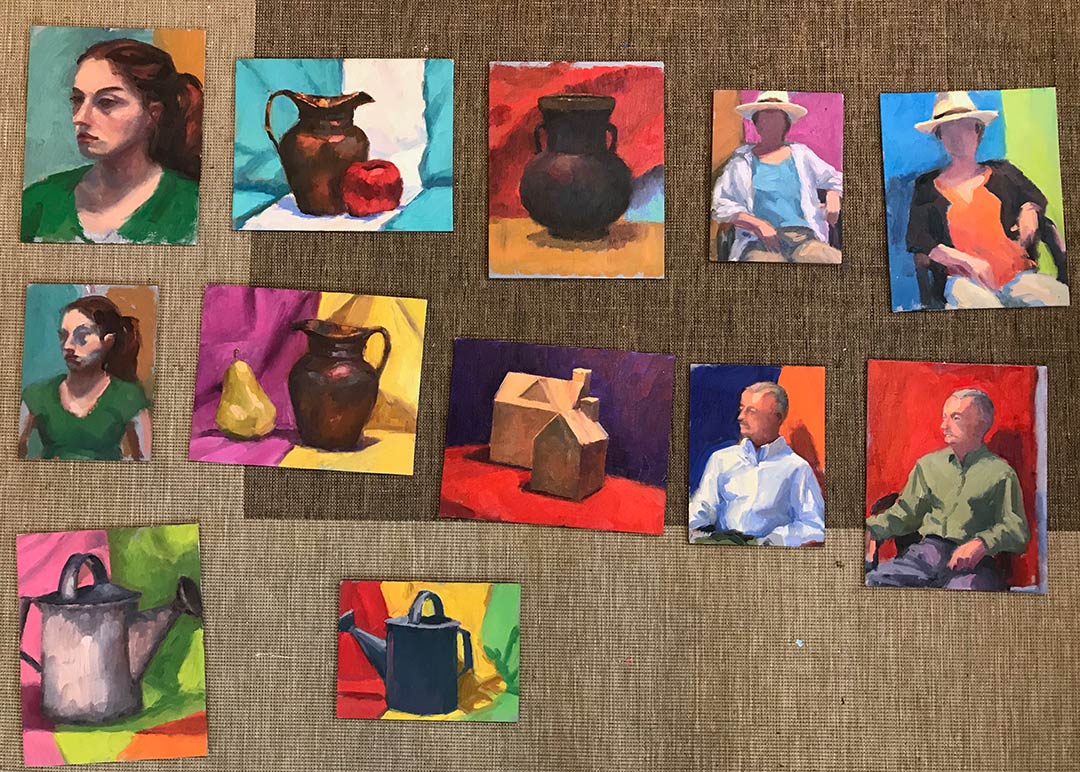Red Canvases
/Since I put my first painting demonstration up on my website a couple of years ago, I have had a number of people ask me about the red toned canvas I used. That demo is a couple of years old. I should probably update that section of my site and add some newer demonstrations, but I just haven't had the time. I used to underpaint many of my landscapes with red (not architectural scenes, however). I rarely do this any more, except when I do my little minis. I used to feel some comfort in having something down on canvas besides the blank whiteness, and the red underpainting was kind of fun. But after a while I found it took too much time to apply the undercoat and I spent a lot of time trying to cover it up in the passages where I wanted it to be cool (such as in areas of far distance.) I think that the reason it still works on the little paintings is that the red undertone does make the colors pop, but with such a small surface I do not need to labor on covering it up for my cool distances.
I will still often tone my canvases with a rather opaque, neutral gray or a warm beige (a tone of raw sienna thinned and scrubbed in a translucent manner over the white of the canvas) when I paint out of doors. The neutral tone of the canvas reduces the bright glare. In the photo below you can see one of my gray-toned panels underneath the plain white ones.

Ideally your palette color should match the color of your canvas for accurate color mixing. In the studio I have a white palette and paint on white canvases. But outdoors my palette is either wood color or a neutral grey. It is not a "must" to match canvas and palette, but it does help to predict what the mixed color will look like when it's laid down on the canvas.















